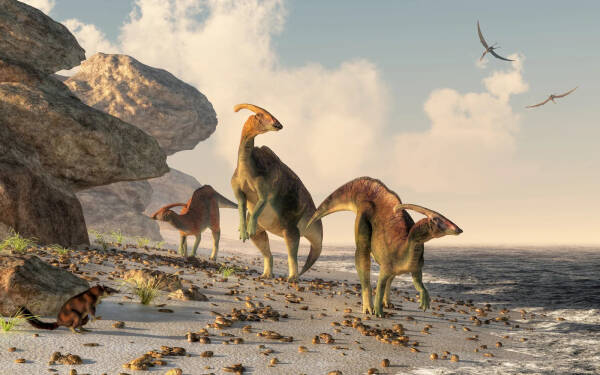One day 66 million years ago, a mountain-sized asteroid struck near the Yucatan Peninsula, with an explosion equivalent to 100 trillion tons of TNT. In that cataclysmic moment, the 165 million-year reign of the dinosaurs ended.
The asteroid theory that killed off the dinosaurs was first proposed in 1980. More than a decade later, the identification of the Chicxulub crater in the Gulf of Mexico pinpointed where and when the dinosaurs died.

Using an impact calculator developed by geophysicists at Purdue University and Imperial College London, the researchers have a good understanding of what happened at and immediately after the impact, known as K-Pg (Cretaceous-Paleocene). recent) extinction event. The asteroid struck Earth at 40,000 miles (64,000 kilometers) per hour, creating a crater more than 115 miles in diameter and instantly vaporizing thousands of cubic miles of rock. Any creature close enough to witness the attack is immediately incinerated, along with all trees and brush. Along the coast, the impact triggered tsunamis as high as 1,000 feet (305 meters) high and earthquakes more severe than any experienced by modern humans.
But the disaster has just begun. Minutes after the initial impact, fiery debris began raining down, covering the ground with deadly ash and dirt. The ground around the impact zone may be covered with hundreds of feet of debris. Less than an hour after the impact, a terrible wind swept through the area, knocking down everything still standing.
Ash, smoke and debris in the atmosphere then spread across the planet, turning daylight into a persistent dusk that lasts for months or even years. Temperatures dropped and food became increasingly scarce. The entire ecosystem collapsed. When it was all over, 75 to 80 percent of life on Earth was gone.
Many people believe that the dinosaurs became extinct soon after the asteroid impact. But while many animals died at the time of the impact and in the weeks that followed (especially near ground zero), the global mass extinction took a while and affected some species more severely than others. For example, many of the small mammals that lived around dinosaurs survived because they lived in caves and could eat almost anything. Additionally, species that live in freshwater generally perform better than those that live on land.
Many researchers now believe that the K-Pg mass extinction occurred at a time when the world was in the midst of environmental changes and life was already in trouble. Times were tough for the dinosaurs: Their world was starting to get colder, and they faced stiff competition from dwindling food supplies. As one species after another finally succumbs, ecological diversity shrinks.
Paleontologists admit they still have many questions about the K-Pg extinction event and its impact on the prehistoric world. They don't know why some species died quickly while others managed to survive, or exactly how the event affected various ecosystems around the world - especially those far removed from the asteroid's impact. Study of areas like the American West, where exposed rocks provide unique evidence of this horrific event, may one day provide answers.
animal tags:
We created this article in conjunction with AI technology, then made sure it was fact-checked and edited by a Animals Top editor.